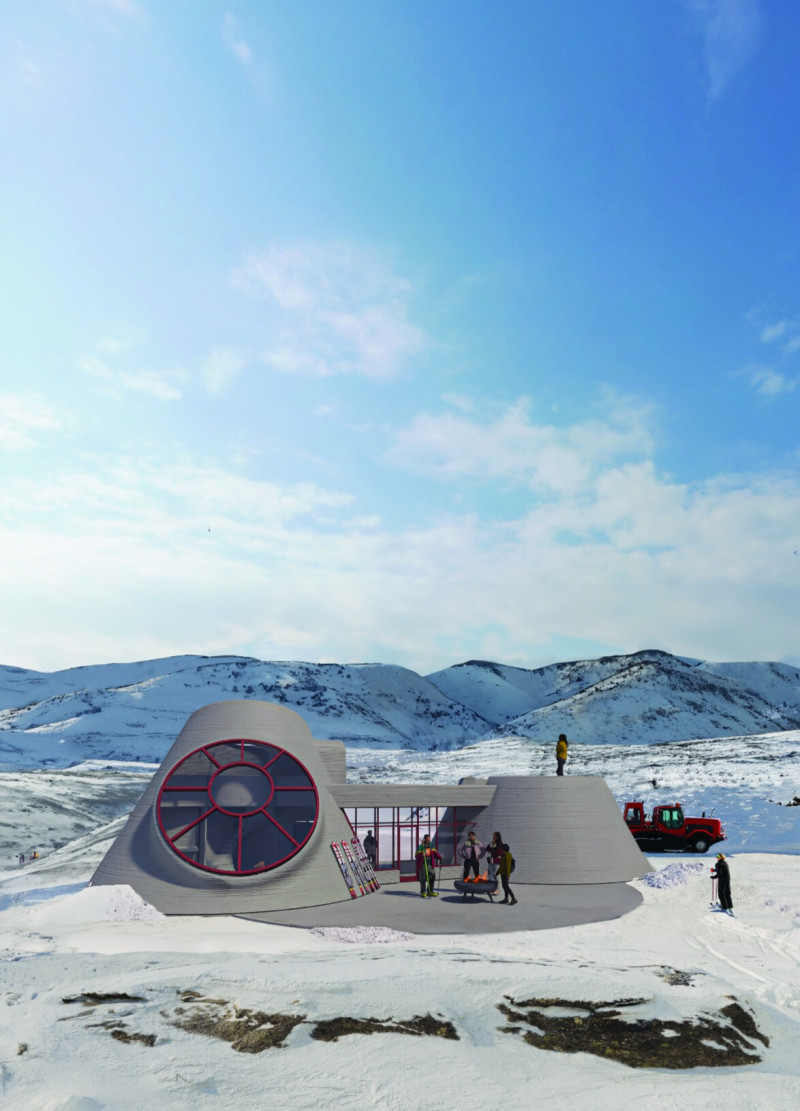5 key facts about this project
At its core, the design serves as a multipurpose space, accommodating various activities while ensuring flexibility and adaptability. The layout facilitates an easy flow of movement, enhancing the user experience and making it suitable for diverse applications. Each area has been meticulously planned, balancing private and communal spaces, with an emphasis on fostering interaction and collaboration among users. This adaptability is vital in today’s architectural landscape, where spaces must frequently transition between different uses and functions.
The material choices showcase a commitment to sustainability while reflecting the local vernacular architecture. The project employs a range of materials such as locally sourced timber, brick, and glass. The use of timber not only aligns with eco-friendly practices but also adds warmth and texture to the building, creating visually engaging interiors that invite users to connect with their environment. Brick provides durability and a sense of permanence, while large expanses of glass foster transparency and connection to the surroundings, allowing natural light to penetrate deep into the space. This thoughtful selection underscores a greater narrative about environmental responsibility and cultural relevance in contemporary architecture.
Unique design approaches are evident throughout the project, particularly in the way it interacts with its site. The positioning of the building takes advantage of the site's topography, enhancing views and natural ventilation. This strategic orientation not only maximizes energy efficiency but also promotes a sense of place, rooting the building within its geographical context. The architects utilized overhangs and shading devices to control heat gain and create a comfortable outdoor environment, demonstrating a deep understanding of the local climate and its impact on architectural design.
The roofscape plays a crucial role in the overall design, incorporating elements such as green roofs or terraces that encourage biodiversity and can be utilized as additional recreational spaces. These design elements not only serve aesthetic purposes but also contribute to ecological goals, helping to mitigate urban heat and manage stormwater. This consideration of environmental factors reflects a broader trend in architecture where designs must consider their ecological footprint and foster resilience in urban settings.
In examining the aesthetic language of the project, one must note the careful attention to proportion, scale, and detail. The façade is characterized by a rhythmic pattern of openings and voids, creating a dynamic visual experience. These openings engage with their surroundings dynamically, inviting the outside in and blurring the lines between interior and exterior. This approach not only enhances the aesthetic value but also promotes natural light penetration and cross-ventilation, leading to a healthier indoor environment.
The project articulates a refined understanding of contemporary architectural ideas while remaining firmly grounded in the local context. It showcases the potential of architecture to respond to the needs of its users without sacrificing the integrity of its environment. This synthesis of function, aesthetics, and sustainable design principles marks this project as a significant contribution to the architectural landscape.
For those interested in gaining deeper insights into the project, exploring the architectural plans, sections, designs, and ideas will provide a more comprehensive understanding of the architect's vision and the building's overall impact. The unique qualities of this project not only serve its immediate user base but also contribute positively to the broader community, encouraging a reevaluation of how architectural spaces can serve society at large.


























